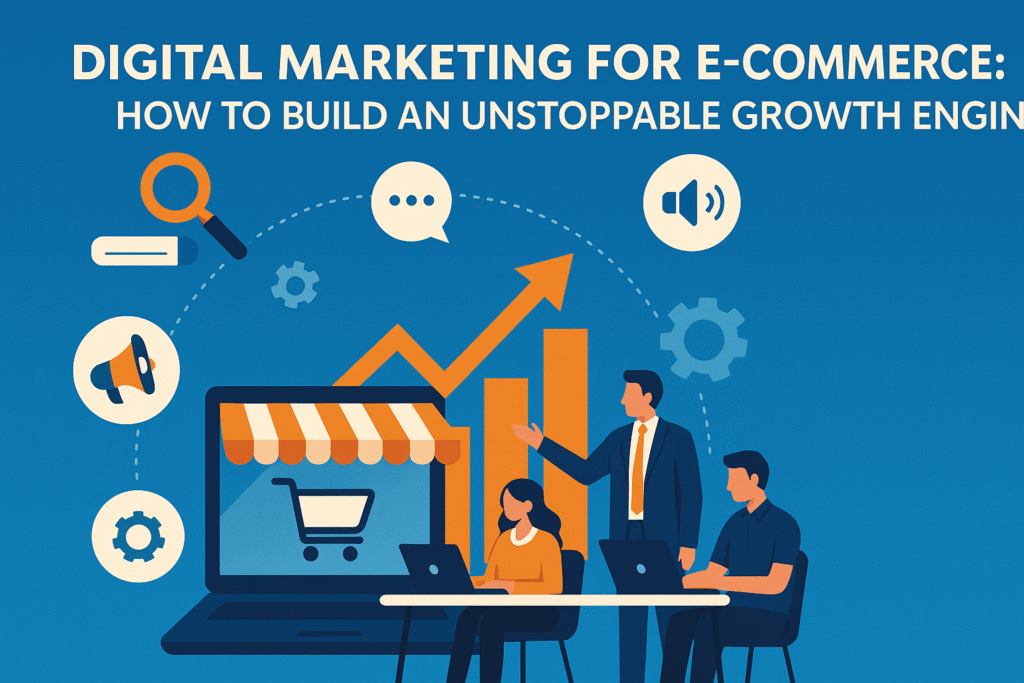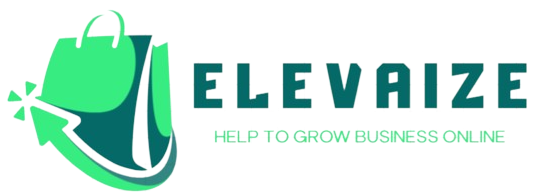
Introduction
The e‑commerce landscape is evolving at lightning speed. With competition intensifying and customer expectations rising, businesses can no longer rely on fragmented marketing tactics. What you need is a digital marketing growth engine—a systemized approach to attracting, converting, and retaining customers using intelligent, data-driven strategies.
In this blog, we’ll break down what a digital marketing engine looks like, why it’s critical for e‑commerce, and how you can build one that drives consistent, scalable growth.
Why Your E‑Commerce Business Needs a Digital Marketing Growth Engine
The Shifting E‑Commerce Landscape
From AI-powered recommendations to voice-assisted shopping, today’s e‑commerce world is dynamic. Consumers are more informed, attention spans are shorter, and shopping habits are increasingly mobile-first.
Brands must now compete not just on product and price—but also on speed, experience, and personalization.
What a Growth Engine Really Means
Think of a growth engine as a continuous cycle where:
- Traffic flows into your website
- Visitors are converted through optimized user experiences
- Customers are nurtured to return and refer others
It’s a flywheel powered by strategic marketing, technology, and analytics.
The Risks of Operating Without One
E‑commerce brands that operate in silos—running ads without conversion tracking or launching SEO without content strategy—struggle to scale. Without a growth engine, businesses experience:
- Unstable traffic
- High bounce and cart abandonment rates
- Poor retention
- Wasted ad spend
Core Pillars of an E‑Commerce Digital Marketing Engine
1. Visibility & Traffic Acquisition
SEO is your foundation. Optimize your product and category pages with structured data, speed improvements, mobile-first design, and intent-based keywords. A strong SEO strategy brings consistent, qualified traffic.
Paid Media channels—Google Ads, Facebook, Instagram, and even TikTok—help you scale fast. Implement smart bidding, lookalike audiences, and shopping campaigns to acquire high-converting users.
Influencer & Social Commerce integration allows your brand to reach audiences natively within their favorite platforms. It builds trust and drives awareness.
2. Conversion Optimization
Getting traffic is only step one. Your site must convert.
- Improve product imagery, CTAs, checkout flows, and page speed
- Use chatbots, exit popups, and AI personalization to engage shoppers in real time
- Implement trust signals: reviews, ratings, secure checkout indicators
3. Retention & Growth Loop
Repeat customers drive profitability. Build a loop using:
- Email & SMS automation for welcome sequences, cart recovery, win-backs
- Loyalty programs and referrals
- CRM integration to segment and personalize offers
Retention also fuels your paid campaigns by improving LTV (lifetime value) and ROAS (return on ad spend).
Step-by-Step: How to Build Your E‑Commerce Growth Engine
Step 1: Audit & Foundation
- Assess your current traffic, UX, tech stack, and funnel
- Define SMART goals: traffic, conversion rate, average order value (AOV), retention
Step 2: Attract High-Intent Visitors
- Launch keyword-focused content
- Run Google Shopping and Meta campaigns
- Add influencer, UGC, and referral strategies
Step 3: Maximize Conversion Rates
- Simplify checkout
- A/B test product pages and CTAs
- Use personalization, live chat, and chatbots like WhatsApp or Messenger
Step 4: Automate Retention
- Deploy post-purchase emails and loyalty points
- Encourage reviews and referrals
- Personalize recommendations and timing of follow-ups
Step 5: Measure and Scale
- Track metrics: conversion rate, CAC, ROAS, churn
- Use heatmaps, analytics tools, and customer feedback
- Iterate based on data—this engine must evolve
Emerging Trends That Will Fuel Your Engine
- AI & Machine Learning: Power dynamic pricing, recommendations, and customer service
- Voice Search & Conversational Commerce: Optimize for how people speak, not just type
- Augmented Reality: Let users “try” before they buy—boosts engagement and trust
- Headless Commerce & Omnichannel Integration: Future-proof flexibility for growing brands
Common Mistakes to Avoid
- Running paid ads without optimizing the website
- Ignoring mobile-first experience
- Overlooking post-purchase nurturing
- Failing to track metrics that matter
- Not staying agile with market trends
Why You Should Work with a Digital Growth Agency
Partnering with a full-stack agency like Elevaize brings instant access to:
- Cross-functional expertise (SEO, paid media, CRO, automation)
- Proven playbooks and creative strategy
- Tools, reporting, and team alignment
We help you stop guessing and start growing—faster, smarter, and profitably.
Conclusion
Your e‑commerce business doesn’t just need traffic—it needs a growth engine.
By combining visibility, conversion, retention, and analytics into a single, agile system, you’ll turn casual browsers into loyal customers. And with platforms, tech, and strategies evolving daily, there’s no better time to build yours.
🔧 Ready to build your digital marketing engine? Start with a free strategy session at Elevaize.com
FAQs
1. What is a digital marketing growth engine for e‑commerce?
A strategic system that continuously attracts, converts, and retains customers using tools like SEO, paid ads, automation, and analytics.
2. How long does it take to see results?
SEO results may take 3–6 months. Paid campaigns can deliver in days. A fully optimized engine evolves over 6–12 months for peak performance.
3. Which channel is best to start with?
It depends on your audience and product. SEO and Google Shopping are great starting points, combined with retargeting ads and email automation.
4. What are key metrics I should monitor?
Conversion rate, average order value, customer acquisition cost (CAC), return on ad spend (ROAS), and customer lifetime value (CLTV).
5. Can I build this in-house or should I hire an agency?
You can start in-house, but partnering with a specialist agency accelerates growth, improves ROI, and avoids costly missteps.

